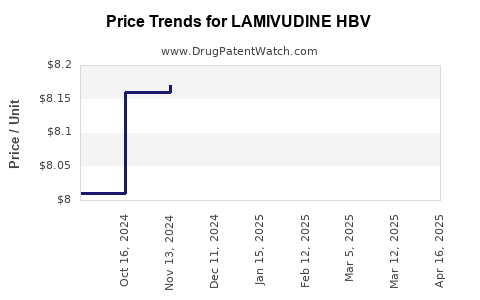Drug Price Trends for LAMIVUDINE HBV
✉ Email this page to a colleague

Average Pharmacy Cost for LAMIVUDINE HBV
| Drug Name | NDC | Price/Unit ($) | Unit | Date |
|---|---|---|---|---|
| LAMIVUDINE HBV 100 MG TABLET | 60505-3250-06 | 8.17097 | EACH | 2024-11-20 |
| LAMIVUDINE HBV 100 MG TABLET | 66993-0478-60 | 8.17097 | EACH | 2024-11-20 |
| LAMIVUDINE HBV 100 MG TABLET | 60505-3250-06 | 8.15970 | EACH | 2024-10-23 |
| LAMIVUDINE HBV 100 MG TABLET | 66993-0478-60 | 8.15970 | EACH | 2024-10-23 |
| >Drug Name | >NDC | >Price/Unit ($) | >Unit | >Date |


